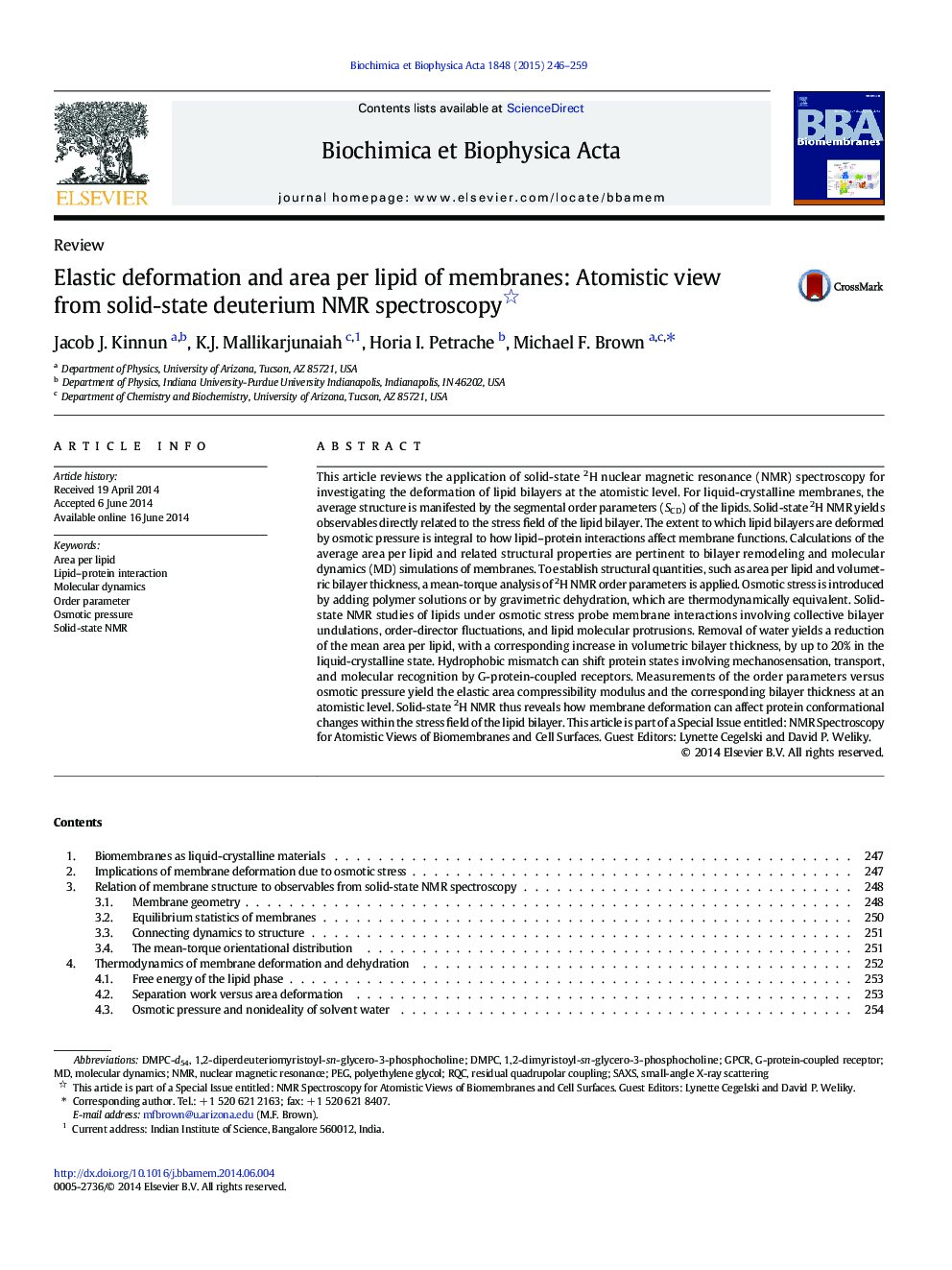| کد مقاله | کد نشریه | سال انتشار | مقاله انگلیسی | نسخه تمام متن |
|---|---|---|---|---|
| 1944050 | 1053175 | 2015 | 14 صفحه PDF | دانلود رایگان |

• Deuterium NMR gives atomistic structural information for lipid bilayers.
• Order parameters for membrane lipids are interpreted using a mean-torque model.
• Area per lipid and bilayer thickness are obtained in the liquid-crystalline state.
• Osmotic removal of water reduces the area per lipid and increases bilayer thickness.
• Membrane deformation due to osmotic stress can affect protein conformational changes.
This article reviews the application of solid-state 2H nuclear magnetic resonance (NMR) spectroscopy for investigating the deformation of lipid bilayers at the atomistic level. For liquid-crystalline membranes, the average structure is manifested by the segmental order parameters (SCD) of the lipids. Solid-state 2H NMR yields observables directly related to the stress field of the lipid bilayer. The extent to which lipid bilayers are deformed by osmotic pressure is integral to how lipid–protein interactions affect membrane functions. Calculations of the average area per lipid and related structural properties are pertinent to bilayer remodeling and molecular dynamics (MD) simulations of membranes. To establish structural quantities, such as area per lipid and volumetric bilayer thickness, a mean-torque analysis of 2H NMR order parameters is applied. Osmotic stress is introduced by adding polymer solutions or by gravimetric dehydration, which are thermodynamically equivalent. Solid-state NMR studies of lipids under osmotic stress probe membrane interactions involving collective bilayer undulations, order-director fluctuations, and lipid molecular protrusions. Removal of water yields a reduction of the mean area per lipid, with a corresponding increase in volumetric bilayer thickness, by up to 20% in the liquid-crystalline state. Hydrophobic mismatch can shift protein states involving mechanosensation, transport, and molecular recognition by G-protein-coupled receptors. Measurements of the order parameters versus osmotic pressure yield the elastic area compressibility modulus and the corresponding bilayer thickness at an atomistic level. Solid-state 2H NMR thus reveals how membrane deformation can affect protein conformational changes within the stress field of the lipid bilayer. This article is part of a Special Issue entitled: NMR Spectroscopy for Atomistic Views of Biomembranes and Cell Surfaces. Guest Editors: Lynette Cegelski and David P. Weliky.
Figure optionsDownload high-quality image (271 K)Download as PowerPoint slide
Journal: Biochimica et Biophysica Acta (BBA) - Biomembranes - Volume 1848, Issue 1, Part B, January 2015, Pages 246–259